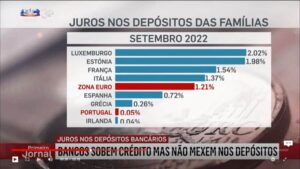Weaker US data send investors running
GBP: Slowing down across the board
The Bank of England, Brexit and the economy were the three themes of the week for sterling. Although none were especially helpful, neither were they damaging enough to do widespread damage. The pound was on average a touch higher against the major currencies. It was unchanged against the US dollar and almost half a cent lower against the euro.
Michael Saunders, an external member of the Monetary Policy Committee, told an audience last Friday that, whatever the complexion of Brexit, “it might well be appropriate… perhaps to loosen policy at some stage”. This was in contrast to the official Bank of England party line that rates could move in either direction. The economic focus was mainly on the purchasing managers’ index readings for manufacturing and services. Manufacturing was better than expected at 48.3 but still below breakeven. Services unexpectedly also fell below the 50 dividing line to 49.5. The two together threaten recession. On the Brexit front, investors are undecided about the prime minister’s withdrawal proposal.
EUR: German manufacturer’s pain increases
To a large extent the news from Euroland was overshadowed by developments in Britain and the United States. It was one of the better performers among the major currencies, sharing second place with the NZ dollar behind the Japanese yen. Economic data from the euro zone largely bore out the pessimism of last week’s Economic Bulletin from the European Central Bank, which foresaw “a more protracted weakness, the persistence of prominent downside risks and muted inflationary pressures”.
Purchasing managers’ index readings for manufacturing and services were again softer. The composite index for Euroland as a whole came in at 50.1, staying in the growth zone by the skin of its teeth. The weakest reading, predictably, was Germany’s manufacturing PMI at a dismal ten-year low of 41.7. The strongest came from Greek manufacturers at 53.6. There was no real reaction by the euro to news that Washington will impose tariffs on a range of EU goods including whisky, aircraft, cheese and biscuits.
USD: Manufacturing slowdown shocks markets
The bullet points for the dollar were not a whole lot different from those for sterling: the Fed, Trump’s threatened impeachment and the economy. The first and last of those were intertwined. In the mix of major currencies, the dollar was steady against the pound, half a cent down on the euro and a little bit firmer on average.
Impeachment proceedings are moving ahead at a snail’s pace, punctuated by regular outbursts from the President and occasion escalations such as his public call for China to investigate Democrat hopeful Joe Biden. Economic data suggest the same is becoming true for the US economy. The PMI numbers engendered considerable disappointment, indicating that the pace of growth is falling more rapidly than expected. Tuesday’s manufacturing PMI from the Institute of Supply Management came in two points lower than expected, missing the cut at 47.8. It caused considerable concern in financial markets, sending share prices in Europe and the States more than 3% lower and sending investors rushing for the cover of Japanese yen.
CAD: Lower oil prices and stalled growth
Canada’s dollar was one of the weakest performers, sharing last place among the majors with the Norwegian krone. It lost a third of a US cent and fell nine tenths of a cent against sterling. Both the Loonie and the krone were under downward pressure from oil prices: WTI crude fell more than 6% over the week, touching a two-month low along the way. Cheaper oil was, to an extent, the result of increased concern about the global economy, driven by soft economic data and fallout from Trump’s trade war.
Canadian data were mostly unhelpful. Industrial product and raw material prices were softer than forecast, with raw materials falling 1.8% in August and output prices rising just 0.2%. Gross domestic product stalled in July, having been expected to expand 0.1%. The only bright spot was the manufacturing PMI. It rebounded by two points into the growth zone, from 49.1 to 51.0.
AUD: RBA delivers rate cut as expected
It was a moderately fruitful week for the Aussie, in that it strengthened slightly on average against the other major currencies. Against the US dollar and the pound it was just about unchanged. The Aussie managed to dodge – or to recover from – several potential pitfalls along the way, not least the Reserve Bank of Australia’s rate cut on Tuesday.
The RBA lowered its cash rate from 1% to 0.75% as expected. That was alright but the statement suggested that the central bank is readier than previously thought to make a further cut. The Aussie firmed up ahead of the announcement and fell afterwards. There was no shortage of economic statistics. Of greatest interest were the two sets of PMIs from AiG and Markit. AiG had a more positive view of manufacturing than Market, while the reverse was true for services. New home sales rebounded 7.3% in August while retail sales increased by 0.4% in the same month, a little less than expected.
NZD: Ignores gloomy economic outlook
The NZ dollar defied the economic data, securing joint second place for the week alongside the euro. Both were 0.3% behind the Japanese yen, which was in demand for its safe-haven qualities as a result of discouraging economic data from the United States and Europe. The Kiwi added a quarter of a US cent and strengthened by three quarters of a cent against sterling.
Building permits were up by 0.8% in August, a much better result than the predicted 2.7% decline. The fortnightly index of dairy prices rose 0.2%, also beating forecast. Unfortunately the more important Quarterly Survey of Business Opinion and ANZ’s Business Outlook painted a far less rosy picture. The QSBO showed a further drop in business confidence to the weakest level since September 2010. ANZ described economic activity as “slip sliding away”, as “investment intentions and profit expectations both fell to dismal levels”.
For corporate partnerships enquiries, please call: +44 (0) 203 823 0526 or email: corporatepartnerships@moneycorp.com
For personal partnerships enquiries, please call: +44 (0) 207 828 7000 or email: partners@moneycorp.com
For all corporate enquiries, please call: +44 207 823 7400 or email: enquiries@moneycorp.com
Please visit our website here to find out more
moneycorp is a trading name of TTT Moneycorp Limited which is authorised by the Financial Conduct Authority under the Payment Service Regulations 2017 (reference number 308919) for the provision of payment services.
For competitive exchange rates, low transfer fees, expert guidance and the special offer of your FIRST TRANSFER FREE call moneycorp on +44 (0) 207 823 7400 or visit www.moneycorp.com/portugal-resident

























